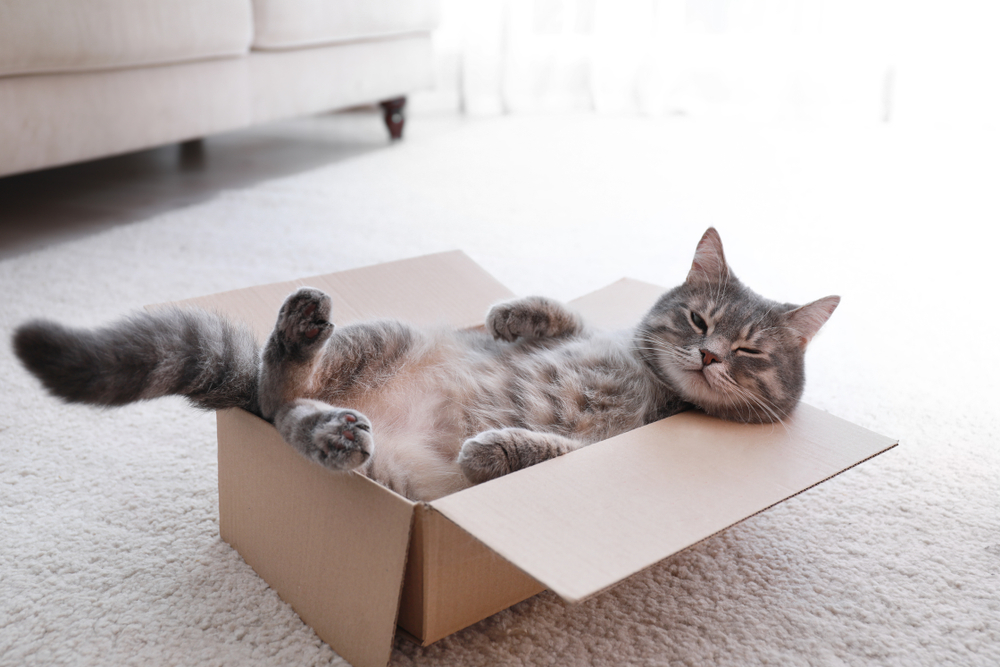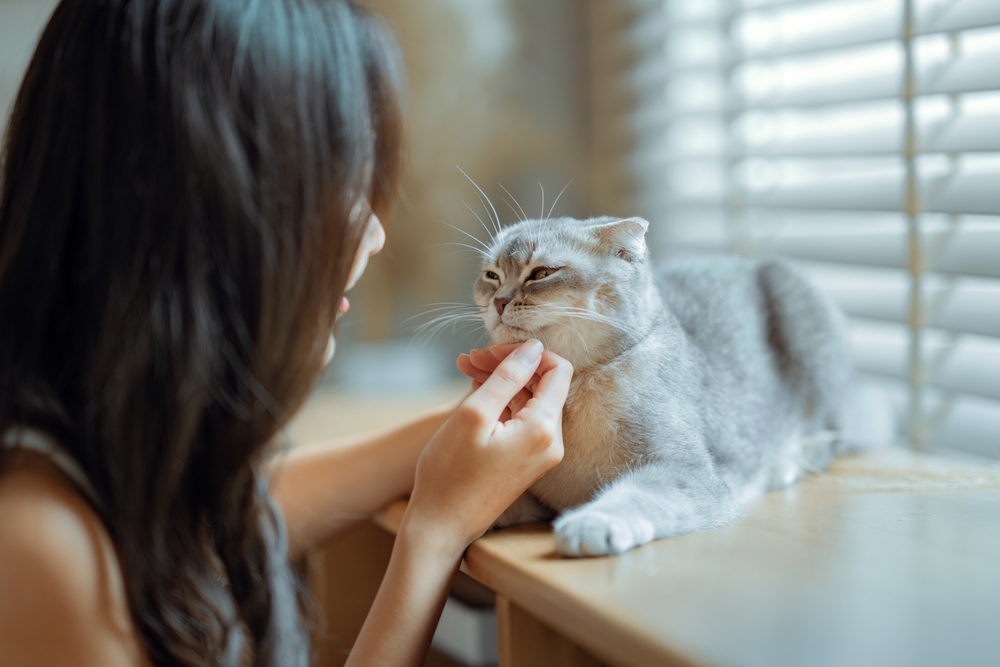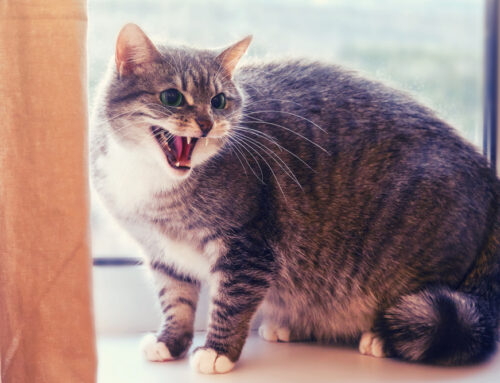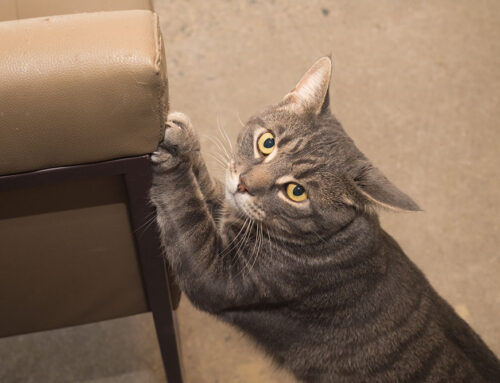Nothing is better than hearing your loveable cat purring with joy, but happy cats are not only in a good mood, they are also healthier and more affectionate companions. Unlock your cat’s secrets to greater contentment and provide the best quality of life with the Cane Bay Veterinary Clinic team’s guide to feline happiness.
How happy is your cat?
Understanding when your cat is happy is the first step toward providing them with a fulfilling life. Cats express contentment with various behaviors and visual cues, such as:
- Purring — Purring generally expresses happiness, but cats also purr when they are nervous or in pain. Look for other clues to help you determine the meaning behind your cat’s purr.
- Playfulness — Happy cats are curious, engaged, and animated.
- Relaxed or loose posture — Comfortable and content cats generally display a relaxed body, half-closed eyes, and a gently swaying tail.
- Social behavior — Happy cats enjoy attention and may seek out petting, rub up against you, or curl up in your lap.
- Normal appetite, thirst, and litter box habits — Happy cats aren’t burdened by stress and therefore maintain normal routines.
Grumpy cat? Think health first
If your cat is unhappy, hiding, or behaving uncharacteristically, they may have a good reason. Painful or sick cats may express their discomfort through unusual behaviors, such as hiding, irritability, or avoiding previously enjoyable activities. If your cat seems depressed or discontented, schedule an appointment at Cane Bay Veterinary Clinic to rule out medical causes.
10 steps to a happier cat
Here are 10 simple ways to increase your cat’s happiness by satisfying their natural needs and desires.
- 1: Engage their mind and body with interactive toys — Interactive and motion-activated toys stimulate your cat’s natural hunting instincts by simulating prey. Feather wands, laser pointers, and treat-dispensing toys can provide hours of entertainment and exercise. Rotate toys often to prevent boredom.
- 2: Create a vertical playscape — Happy cats love to climb, perch, scratch, and hide. Cat trees and play structures satisfy these needs and more. Cats also enjoy observing their surroundings from high vantage points, so place your cat’s tree or similar furniture where they can observe household activities.
- 3: Turn mealtime into playtime — Puzzle feeders and food-dispensing toys stimulate movement and encourage problem-solving. They also challenge your cat to work for their food by engaging in natural behaviors, such as sniffing, stalking, chasing, pouncing, and manipulating an object.
- 4: Provide a window seat and something to watch — Install a perch or hammock near a window where your cat can lounge in the sunshine or monitor the neighborhood. Consider installing a bird or squirrel feeder near the window for extra entertainment. Place additional furniture or a pet ramp nearby to make the perch easily accessible for arthritic senior cats.
- 5: Create cozy home hideaways — Happy cats may feel comfortable lounging in the middle of an open room, but many felines prefer the safety and privacy of a cozy hiding place. Create for your cat some cozy retreats around your home, such as soft beds, cat tunnels, baskets, or simple cardboard boxes.

- 6: Play with your cat — Dedicate a few minutes each day to playing with your cat. This could include playing with a favorite toy, encouraging your cat to chase you, or teaching them a fun trick—yes, cats can be trained! Regular playtime strengthens your bond, satisfies social needs, and helps prevent boredom and stress.
- 7: Groom your cat — Many cats enjoy being groomed, especially as part of their regular routine. Gentle brushing promotes skin and coat health, decreases shedding and hairballs, and enhances the cat-owner bond. If your longhaired cat mats easily, work with your groomer to learn the proper tools and techniques.
- 8: Provide scent-based enrichment — Cats are often intrigued by unfamiliar smells. Scent-based enrichment provides mental stimulation and satisfaction. Safe scents include catnip and cat-safe herbs. Do not use essential oils without our veterinarian’s approval, as many are toxic to cats.
- 9: Let your cat enjoy safe outdoor time — If possible, consider training your cat to leash-walk or providing them with a safe outdoor enclosure or catio, because fresh air and new sights can be highly enriching. As always, monitor your cat’s behavior to ensure they are not overwhelmed.
- 10: Establish and maintain a routine — Cats thrive on a consistent schedule. Keeping feeding times, playtimes, and grooming sessions consistent will help your cat feel secure and content.
The happiest cats are those who feel loved and safe. In addition to creating a positive and fulfilling home environment, caring for your cat’s health with routine visits to Cane Bay Veterinary Clinic is the best way to enjoy more purrs, biscuits, and head butts—all signs of not only affection but also a life well-lived. Contact us to schedule your cat’s next visit.







Leave A Comment